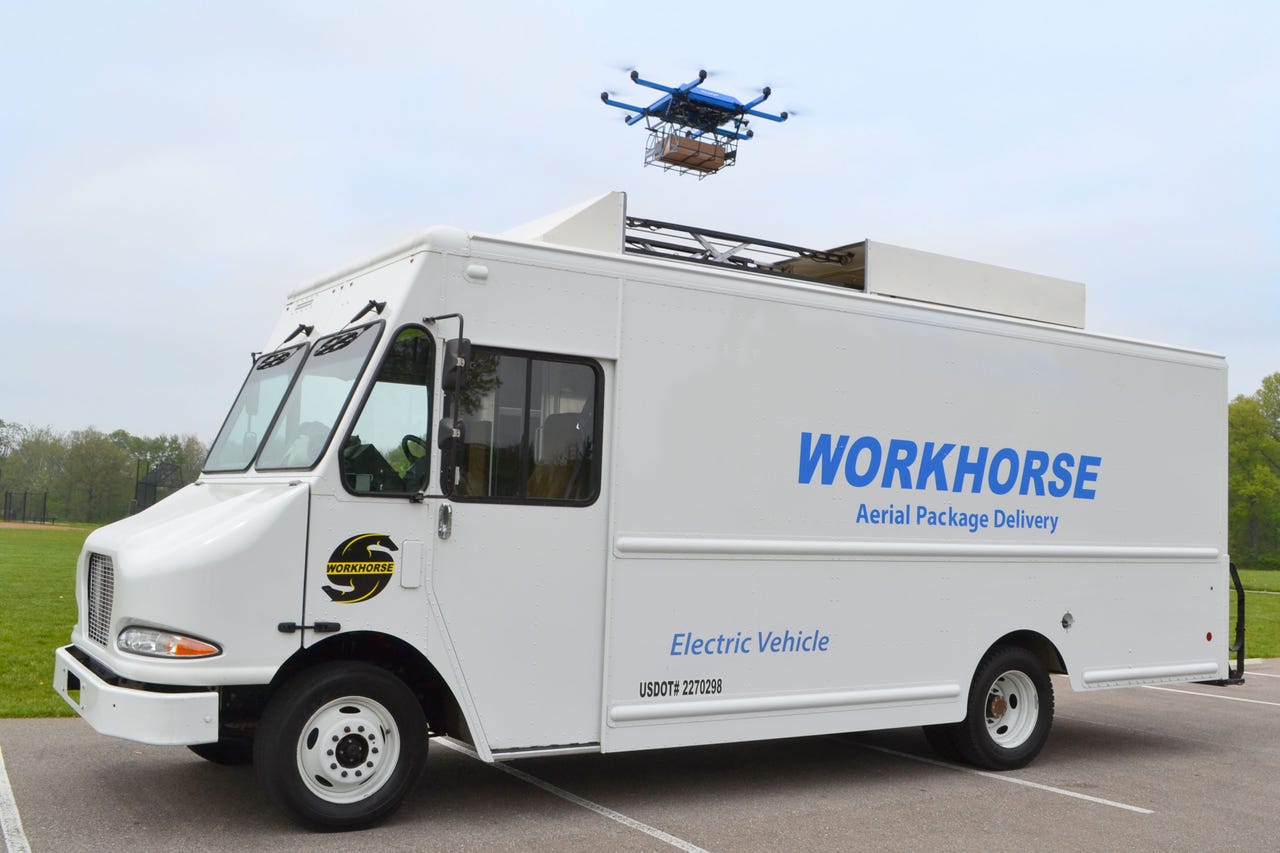How to deal with FAA drone regulations, according to Workhorse CEO Steve Burns


Image: Workhorse
When the FAA finally released commercial drone regulations earlier this year, many executives were disappointed. The rules -- especially the requirement that pilots keep drones within their line of sight -- dampened dreams of commercial delivery services. Steve Burns, CEO of Workhorse, a company that specializes in electric delivery trucks, has an unusually optimistic view. He tells ZDNet:
The thing that's really impressed me about the FAA is, they have groaned under the pressure of trying to get these rules out. And they finally came out with these rules, and instead of giving themselves a high five and saying 'we finally got it done,' the last rule says that all these rules can be broken if you show them it's safe.
With that in mind, Workhorse plans to start using drones to deliver packages at the end of August. They have already been testing the system with a Section 333 Exemption, and the next step is conforming to the FAA's new rules. After all the hype, the first deliveries may be a bit anticlimactic, since they will launch from trucks and will only save drivers a few steps. But this is only the beginning.
The strategy is to start with an extreme amount of caution and redundant features, in order to make the FAA and the public fall in love with drone deliveries. And they will, says Burns, "when they realize how green and how inexpensive and how safe a drone really is, compared to a person in a diesel truck rolling up. Just wait for all the metrics."
The company will use a drone call Horsefly, which was designed and built in house. It has eight propellers, but it can keep flying if a propeller is damaged or disabled. The drone's sensors will automatically turn a propeller off if an unexpected obstacle, such as a bird, gets too close. The maximum payload is ten pounds and it can fly as fast as 50 miles per hour. In accordance with the FAA rules, it was designed for line-of-sight deliveries, but it has a five-mile range when fully loaded.
Read this
Horsefly takes off from the roof of a delivery truck and navigates to its destination to unload packages. As an extra precaution, when it gets approximately 25 feet above the drop off location, cameras will turn on and another pilot (based at a Workhorse command center) will remotely assist. "It's still landing in automatic mode but if the person in the command center has to nudge it over to avoid a bush or something like that, they can do it," says Burns.
Then the drone will fly itself back to the truck where it will dock and recharge from the truck's battery. At first, drivers will stay nearby to watch the delivery. Eventually, though, the goal is to have the drones deliver packages while drivers continue along their route.
This model makes the most sense in a rural environment where deliveries are expensive because destinations are spread out and even driveways can be miles long. As a drone delivers one package to a customer, the truck driver can continue along and deliver another one to the next customer by hand.
For now, though, Workhorse is proceeding cautiously, with what Burns describes as "belts and suspenders" approach. "I see the way the FAA works. They're data driven," he says. He continues:
Safety is the first paramount thing. And once you get their trust, and once they know a big corporation also doesn't want anything to happen any more than the FAA. We see ourselves going above and beyond more than the FAA is asking for. They're not asking for someone to watch on a camera as the drone descends, but we're doing that. We're going to ease into it.